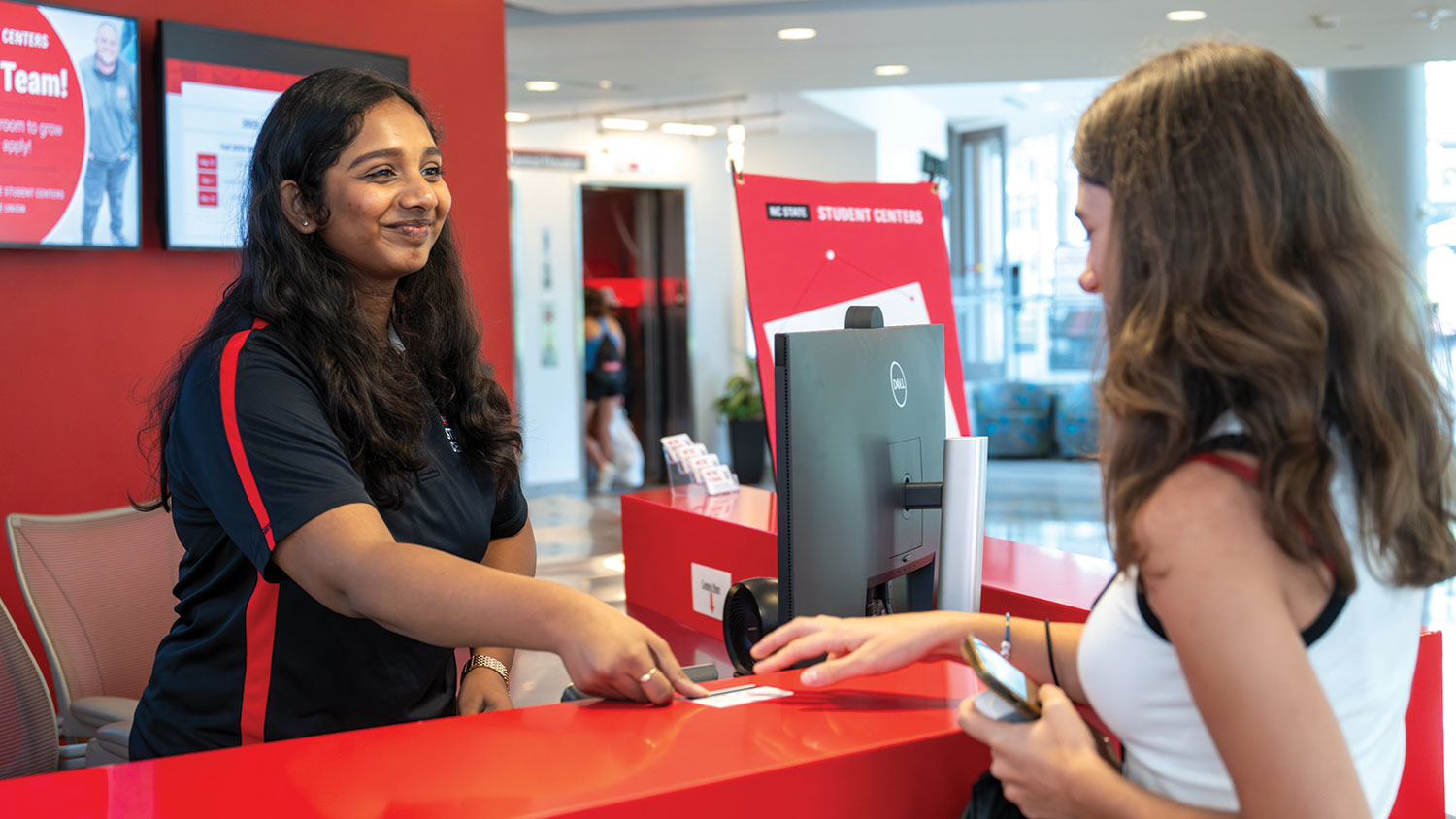Eye of the Storm: A Firsthand Account of the Capitol Riots
Most of us watched the siege of the U.S. Capitol from our homes. For Leigh Ann Caldwell ’00, the Capitol is a workplace. She takes us through the day that won't soon be forgotten.
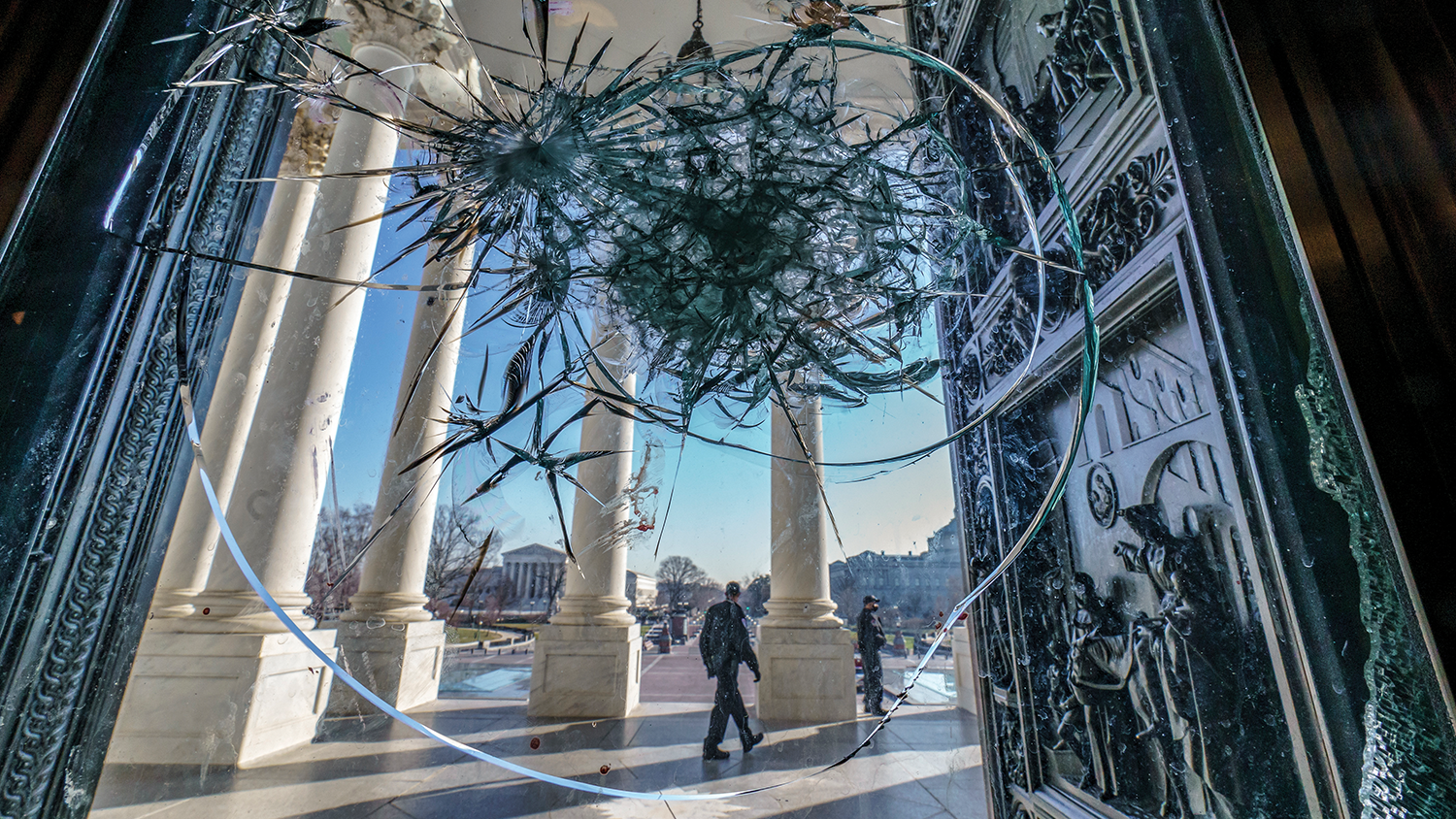
I didn’t know how it was going to end.
— Leigh Ann Caldwell ’00
Leigh Ann Caldwell ’00 is a congressional correspondent for NBC News. She spends her days in the U.S. Capitol, covering the Senate and House, policy and politics. On the morning of Jan. 6, Caldwell headed to work before sunrise to cover the certification of the Electoral College votes electing Joe Biden president. At the same time, thousands of supporters of President Donald Trump gathered near the White House for a rally to protest the votes. She was ready for a long day. But she didn’t know what was in store. We sat down with Caldwell a few weeks after the siege. This is her story.
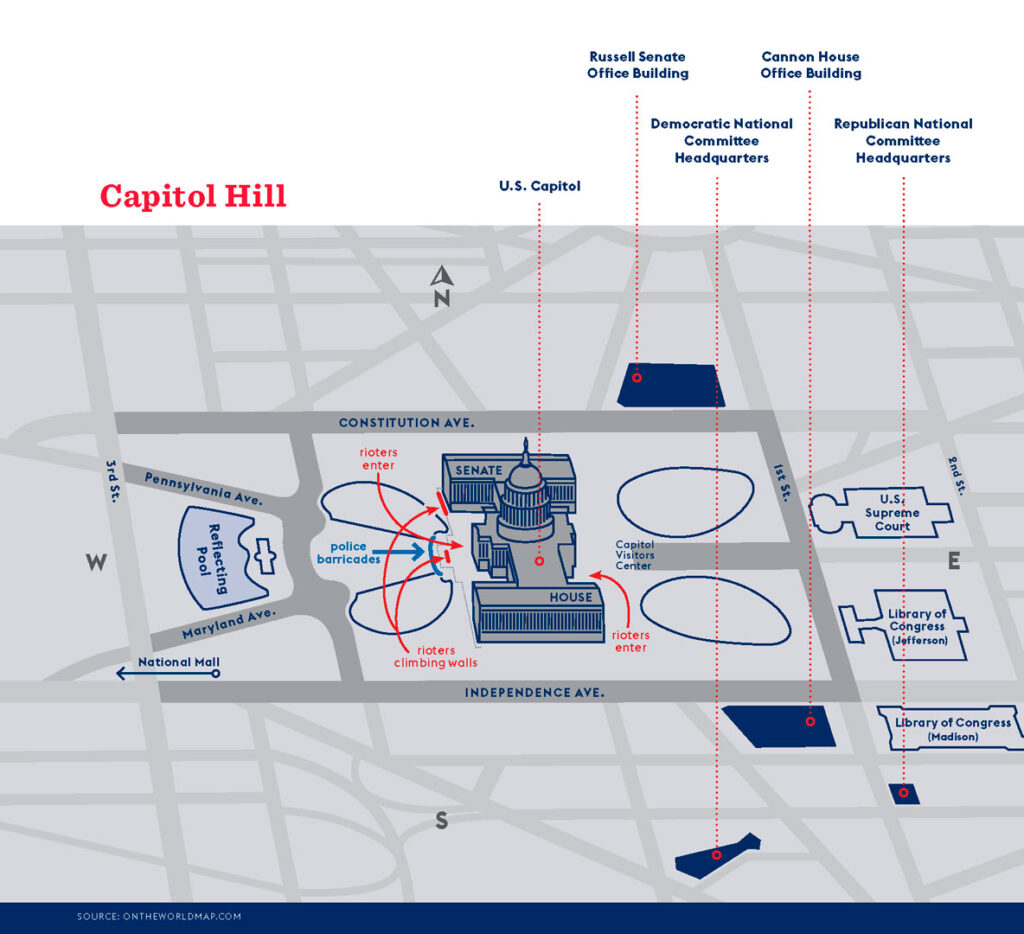
Jan. 6, 2021. 6:30 a.m.
Caldwell, a former distance swimmer for NC State, normally rides her bike to work. But on this day, she didn’t want to be biking among the protesters. She packed a breakfast of almonds, a grapefruit and hot black tea in a thermos. An Uber picked her up.
On the way there all the streets kept getting blocked off. We were running late, and then the car got a flat tire. It was 6:30 in the morning. The crowds were already starting, tons of maskless people with Trump flags. I finally got another Uber. We went straight down Independence [Avenue]. In the middle of all that, I lost my congressional ID to get into the Capitol. I had to call one of our producers, who lives just a block and a half away, she’s literally in her pajamas. She runs out in the freezing cold and escorts me into the Capitol. And then I make it to where I was to be stationed the rest of the day.
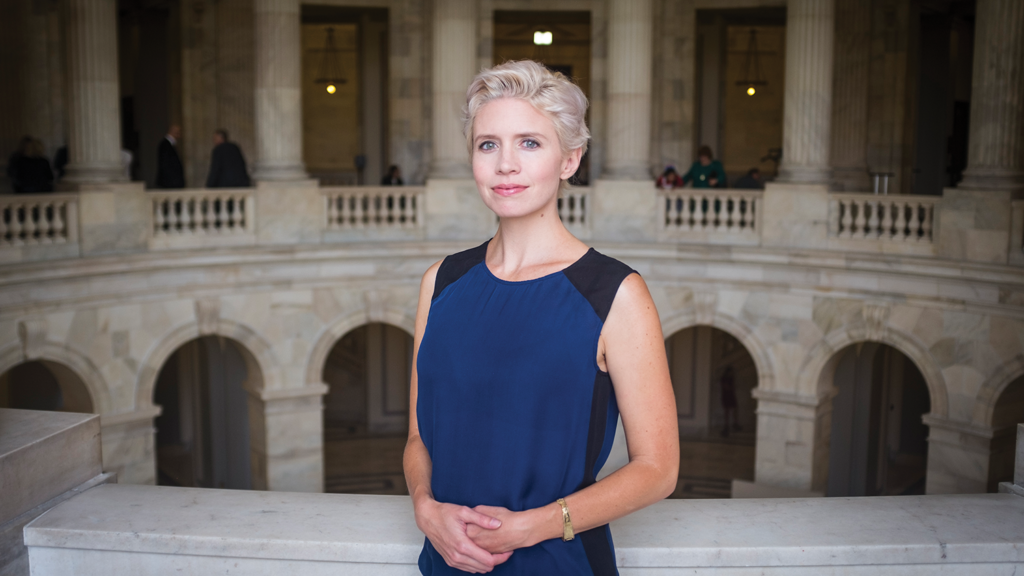
The U.S. Capitol complex consists of not just the domed Capitol building, but also other buildings that house offices for senators and representatives, all connected by underground tunnels that are frequented by lawmakers, their staffs and journalists. Caldwell was stationed in the Cannon House Office Building, planning to do her live shots from that building’s rotunda.
It was already crowded, lots of cameras and reporters. My first live shot was for NBC News NOW, which is our streaming service. They put me on at 7:30 a.m. We had two other correspondents, Kasie Hunt and Garrett Haake, both in the Russell Office Building. We had three on-air correspondents that day because we also had three broadcasts. A lot of programming. I had more live shots at 9 a.m. and at 10.
As the morning progressed, thousands of people gathered outside the White House, waiting to hear from Trump. After her 10 a.m. live shot, Caldwell headed to the Capitol, where she covered a news conference by Sen. Chuck Schumer (D-NY).
Starting about 12:15, I’m hanging around the Capitol. I walk to the House side, see what’s going on, then walk over to the Senate side, waiting for senators to come out. They were going to meet on the Senate floor and then proceed to the House floor for the joint session, which was to begin at 1 p.m. I’m waiting for [Sen.] Mitch McConnell, the newly demoted leader, hoping to see him and to get some questions in. Just, doing my job. I remember looking at the stand, not the actual box, but the stand that would hold the mahogany box with the actual electoral votes that would be brought in. This was outside the Senate floor in what’s called the Ohio Clock Corridor. This is where you stand a lot of times to wait for Mitch McConnell to walk by, because it’s between his office and the Senate floor.
At about 1 p.m. I told our Senate producer that I needed to go back to Cannon to be by a camera. So I walked over to the House side. You walk past McConnell’s office, past this beautiful chandelier, then through the rotunda of the Capitol, through Statuary Hall. Then I take the elevator to the basement to go through the tunnel. On my way, there’s a lot of members walking to the Capitol for the joint session. And I run into one member and stop to talk. We were just chatting for a few minutes, and then she said, “I have a tip for you.” She says, “The RNC has just been evacuated.” The RNC, Republican National Committee, is about a block and half from the Capitol. I immediately text the reporter who covers the RNC. And then I continue on to Cannon. I take the elevator up to the third floor to get to our camera position, and I’m getting wired up.
By that time, McConnell was speaking on the floor, giving a very powerful speech about democracy, condemning objections to these [Electoral College] votes. I only heard a little of it. Right after I got wired up, I was starting to listen. And just then a Capitol Police officer came into the rotunda, and he starts yelling, “Everyone needs to leave. The building is being evacuated.” We had just heard that the RNC was evacuated, and the RNC is very close to Cannon. I immediately call our desk again and tell them what’s happening. The desk says, “OK, stay wired up so you can go on air.” Our camera guy has a backpack he’s wearing, we call it a LiveU, which is able to instantaneously send broadcasts live. No satellite truck, it all happens in a backpack. I’m connected to my audio person, who is also wired. We are evacuated down the stairs and we are taken to a hallway connecting Cannon with another House building.
The Cannon House Office Building was the first in the Capitol Complex to be evacuated, at 1:26 p.m. Caldwell remains in the hallway with other reporters while the Capitol Police respond to reports of a bomb at the RNC, which is later identified as a pipe bomb. She and her crew are told they can go back in the building, so they return to the rotunda area of Cannon. Meanwhile, the mob has breached the fencing surrounding the Capitol on the east side.
When we’re back in, we’re at our position, and there’s a balcony right next to us that goes outside. I went out there with Dave and Patty, my camera and audio producers. Then we could see — we had a clear shot of the Capitol. And you could see the mob on the steps. They hadn’t gotten in, but they were covering the center steps. We had a really clear shot. So Dave starts rolling and he has a really good image. I call the desk and tell them what we have. The center steps are — you’re not supposed to walk up those steps. I was like, “This is insane. This is really dangerous. This is really scary.”
And I didn’t know how it was going to end. I had never seen anything like that before in my life. People are never on those steps.
Caldwell was watching the majestic front steps of the Capitol on the east side, which face the U.S. Supreme Court and the Library of Congress. Those steps, like those on the west side, have been off-limits to visitors and tourists since after the Sept. 11, 2001, terrorist attacks.
At 2:08 p.m. Caldwell tweeted: “We’re back in Cannon. This is what’s happening at the steps of the Capitol, which isn’t allowed to have people.” She added a video from her phone of the surging crowd pushing their way up the steps. At the same time, protesters on the west side of the Capitol Building, where the inauguration stand was being constructed, were scaling the walls and preparing to enter.
At 2:15 p.m., Capitol Police sent an alert to congressional staff that no entry or exit is allowed in Capitol buildings due to an “external security threat.”

The image was just so stark and shocking. I was on the phone with the control room, telling them what our feed was and what we were seeing. But we were only on the balcony for like five minutes. Then the Capitol Police came in and said we weren’t supposed to be back in the building. We told him we had been allowed back in. He said, “You have to leave now.”
This time, we go into another House office building, where we were told to go into the cafeteria in the basement. I didn’t know a lot about what was happening, so I was reaching out, first of all to my NBC News team. My other Hill colleagues, we have a text chain that we’re constantly on. We were keeping each other up to date, and I was reaching out to my own sources as well, to see where people were, what was happening, who was safe, were there problems. I was still trying to report, but because we were the first to evacuate, there were points when I felt like I was unable to offer a lot, which is a hard feeling to have as a reporter. I wasn’t hearing a lot from sources at that point. Everyone was confused. People were trying to stay safe.
While Caldwell was in the office building, the rioters breached the Capitol Building and made it into the House chamber just after members were evacuated. Caldwell’s husband, Greg Jaczko, was at home with their two children. He had been watching the news, but had not heard from her.
While I was in the cafeteria they broke through into the Capitol. That’s when the fear — people’s realization of what was happening and how bad it was. It was finally around 2:15 when I responded to my husband. I was focused on my job and I didn’t feel in any immediate danger. He’s watching the news. He has no idea where I am. And I didn’t connect that at first and he’s finally, like, “Will you please just tell me you’re OK?” And I was like, “I’m OK, yes.” I was getting a million texts and tweets and messages, asking if I was OK, and I just couldn’t respond because there was so much going on. I told my husband, “I’m OK, please tell our mutual friends and my family.”
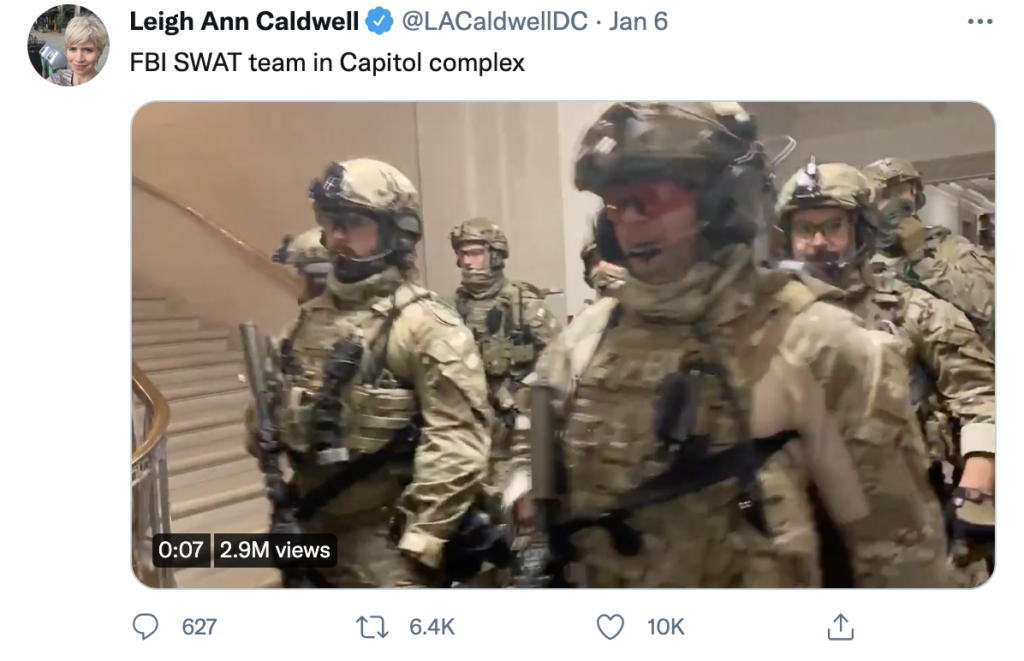
At 3:52 p.m. Caldwell tweeted: “I realize I haven’t updated. I’m safe. Was evacuated again to [a House office building].” A few minutes later she tweeted a video of a swarm of FBI officers in camouflage and riot gear walking down the hall.
We couldn’t leave the building, but I was able to go to different floors. So I would walk up and down the stairs and around the building to see if I could find out anything. On one of my walks, I saw the FBI SWAT team in the hallway. You could see groups of staffers being ushered up and down the steps, being moved to different places. I would see staffers that I know. One staffer who knows me was coming up the stairs and she’s like, “Leigh Ann, oh my God,” and she gave me this huge hug.
At about 6 p.m., we were let back into Cannon. Then there was an announcement that everyone had to leave, and they tried to evacuate us again about 7 p.m. I said, “Look, we have to do our jobs.” So I called the organization that serves as a liaison between the press and the Capitol Police and told them about it. In the end, they didn’t make us leave again, and we were able to stay.
At 9 p.m., Caldwell does her first live shot since morning, appearing on CNBC’s The News with Shepard Smith. “It was an extraordinary and unprecedented day here on Capitol Hill,” she said on air. “I was in the Cannon office building getting ready to go on television when we were told to get out of this building immediately and were escorted to another office building, and things just progressed throughout the day from there. What’s happening right now is, the Senate is trying to get the democracy back on track.” Caldwell went home at 10 p.m., 15 hours after her workday began.
Jan. 7, 2021. 6:00 a.m.
The next day, Jan. 7, Caldwell was on the early shift and back at the Capitol at 6 a.m. She had live shots at 7 and 8 a.m., and in between, she walked the nearly deserted Capitol building taking pictures of the evidence of destruction. One photo she tweeted out showed what looked like bullet holes in the glass doors that lead to the Capitol steps, another showed shards of glass on the floor where a protester was fatally shot. She ended with a photo of the Capitol as the sun rose.

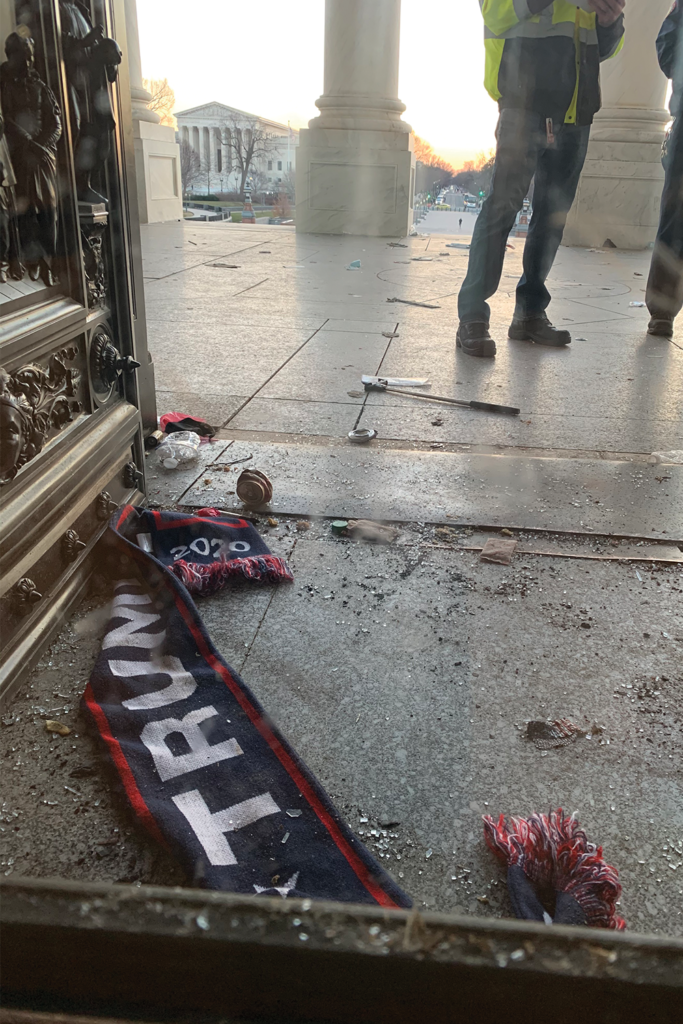
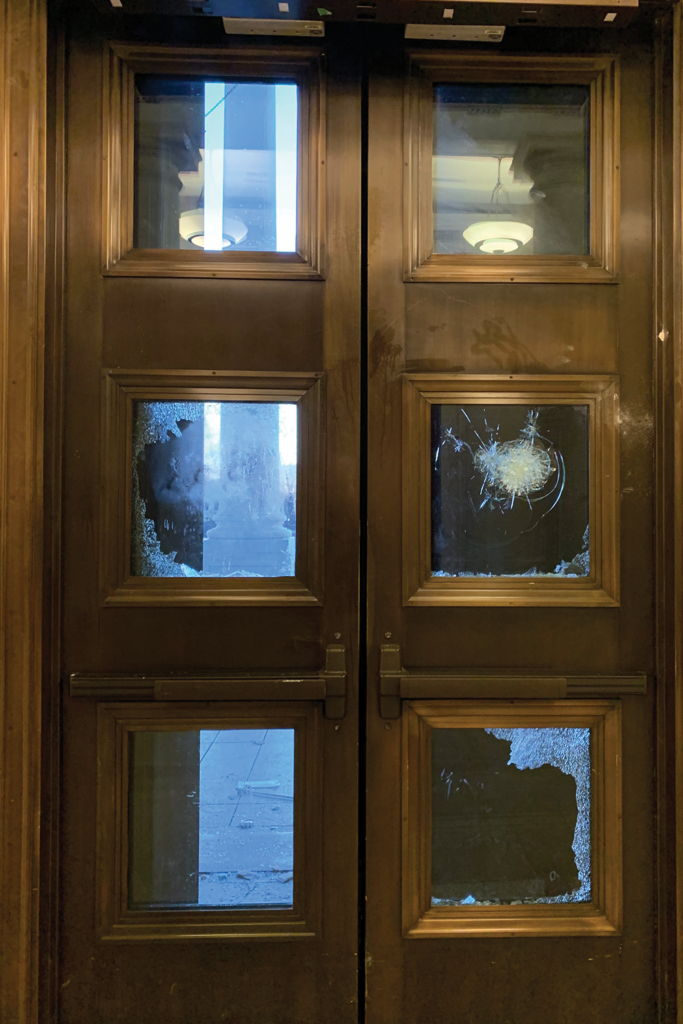
Seeing the Capitol the next morning, it was heartbreaking. Absolutely heartbreaking. Devastating. Right now there’s a lot of National Guard here. And in their free time, they walk around the Capitol. Most of them have never been here in their lives. The official historian tour guides will come out and stand in prominent places so when the Guard members come in, they tell them all about the rotunda, for instance.
It’s cool. I’ve overheard some of them, saying things like, “Wow.” The awe that comes out of your mouth naturally when you see something that’s really stunning and magnificent. Just today, there were six or seven of them, and I started talking to them and asked them what they thought about the Capitol. I said, “I’m a journalist — and this building is so beautiful and gorgeous. I feel so much honor and gratefulness to be able to work in this space every day.”
This story appears in the Spring 2021 issue of NC State magazine.
- Categories:
